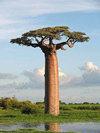隐树属十二新种(附二新种)。来自新喀里多尼亚
IF 0.6
4区 生物学
Q4 PLANT SCIENCES
引用次数: 0
摘要
Cryptocarya R.Br.的两种特有种。产于新喀里多尼亚。Cryptocarya conduplicata Munzinger & McPherson, sp. 11 .以前与C. aristata Kosterm混淆。它的典型特征是皮孔多,果实扁圆形,但最明显的区别是叶片部分纵向折叠(叶片平坦),果实较小(13-15毫米长对20-30毫米长)。Munzinger & McPherson, sp. 11 .可以很容易地从其分子数据的姐妹种C. pluricostata中区分出来,根据其唆使(毛稀疏,白色,奶灰色到黑色,迅速脱落,而C. pluricostata的毛浓密,铁质亚浅褐色和近宿存)。此外,C. ovoidea, sp. 11 .的果实为卵球形,花被早落,而C. pluricostata的果实为椭圆形,保留花被。这两个新种是生长在茂密潮湿森林中的乔木,并且局限于非超基性基质。Cryptocarya conduplicata sp. 11 .是常见的,在三个保护区已知,并被分配到初步的最不受关注的IUCN状态,而C. ovoidea sp. 11 .只在mount aoupine本文章由计算机程序翻译,如有差异,请以英文原文为准。
Novitates neocaledonicae XII: Two additional new species of Cryptocarya R.Br. from New Caledonia
ABSTRACT Two endemic species of Cryptocarya R.Br. are described from New Caledonia. Cryptocarya conduplicata Munzinger & McPherson, sp. nov. was previously confused with C. aristata Kosterm., which it resembles in its typically numerous lenticels and oblate fruit, but from which it differs most noticeably in its leaf blades partly folded longitudinally (vs blades flat), and its smaller fruits (13-15 mm long vs 20-30 mm long). Cryptocarya ovoidea Munzinger & McPherson, sp. nov. can be distinguished most easily from C. pluricostata, its sister species according to molecular data, by its indument (hairs sparse, whitish, cream-grey to blackish, quickly falling vs. hairs dense, ferrugineous sublanate and subpersistent in C. pluricostata). As well, the fruit of C. ovoidea, sp. nov. is ovoid and its perianth is caducous, in contrast to the fruit of C. pluricostata, which is ellipsoid and retains its perianth. The two new species are trees occurring in dense humid forest, and are restricted to non-ultramafic substrate. Cryptocarya conduplicata sp. nov. is common, known from three protected areas, and is assigned a preliminarily Least Concern IUCN status, while C. ovoidea sp. nov. is only known from two individuals on Mont Aoupinié, a protected area, where many inventory plots were established without finding any individuals; thus, we assign it a preliminary status of Critically Endangered (CR).
求助全文
通过发布文献求助,成功后即可免费获取论文全文。
去求助
来源期刊

Adansonia
生物-植物科学
CiteScore
1.30
自引率
12.50%
发文量
24
审稿时长
>12 weeks
期刊介绍:
Adansonia is a fast-track and peer-reviewed journal of plant biology, devoted to the inventory, analysis and interpretation of vascular plants biodiversity. It publishes original results, in French or English, of botanical research, particularly in systematics and related fields: morphology, anatomy, biology, ecology, phylogeny, biogeography, etc. All articles published in Adansonia are compliant with the different nomenclatural codes. A copyright assignment will be signed by the authors before publication.
 求助内容:
求助内容: 应助结果提醒方式:
应助结果提醒方式:


